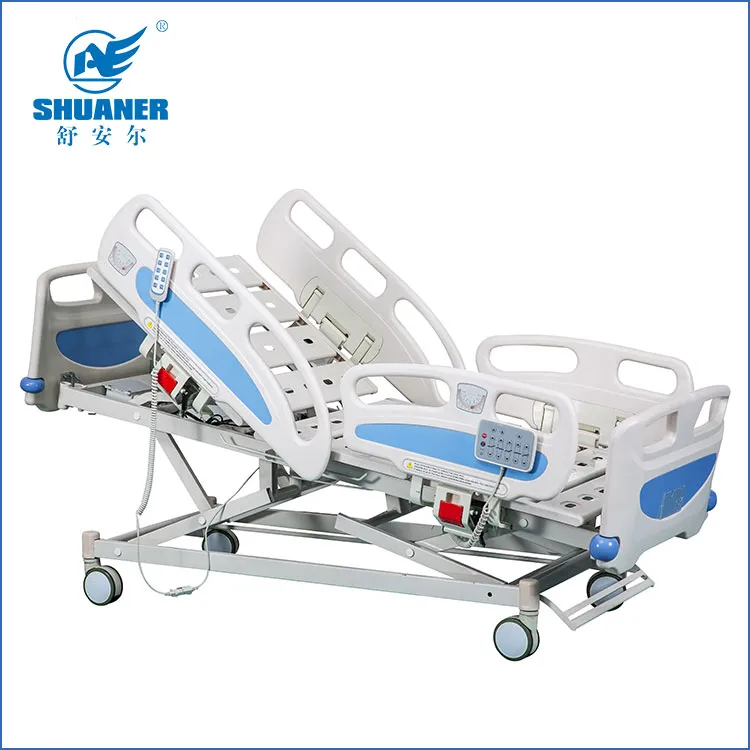- English
- Español
- Português
- русский
- Français
- 日本語
- Deutsch
- tiếng Việt
- Italiano
- Nederlands
- ภาษาไทย
- Polski
- 한국어
- Svenska
- magyar
- Malay
- বাংলা ভাষার
- Dansk
- Suomi
- हिन्दी
- Pilipino
- Türkçe
- Gaeilge
- العربية
- Indonesia
- Norsk
- تمل
- český
- ελληνικά
- український
- Javanese
- فارسی
- தமிழ்
- తెలుగు
- नेपाली
- Burmese
- български
- ລາວ
- Latine
- Қазақша
- Euskal
- Azərbaycan
- Slovenský jazyk
- Македонски
- Lietuvos
- Eesti Keel
- Română
- Slovenski
- मराठी
- Srpski језик
Do electric medical beds need regular disinfection?
2024-11-22
Electric medical beds need to be disinfected regularly, especially when used in medical institutions. Since electric medical beds are often used for the care of patients or the elderly, they come into contact with the patient's skin, body fluids or wounds, etc., and the risk of transmission of bacteria, viruses and other pathogenic microorganisms is high, so regular disinfection is very important.
Why electric medical beds need to be disinfected regularly:
Prevent cross infection: Patients may have wounds, excrement or other body secretions in bed, which are easy to breed bacteria. Regular disinfection can effectively reduce the risk of infection.
Keep clean: Electric medical beds often come into contact with the patient's skin and clothing, and are prone to accumulate dust, stains and other substances, affecting the patient's comfort and hygiene conditions.
Ensure the long-term use of the equipment: Some disinfection processes can also remove dirt or material accumulation caused by long-term use, thereby helping to maintain the performance of the equipment.
Disinfection focus of electric medical beds:
Bed surface and mattress: Clean and disinfect the surface of the bed, especially the parts that the patient may touch, and use disinfectants suitable for the medical environment.
Electric control system and buttons: The control panel, remote control, buttons and other parts of the electric bed are easily contaminated, and special attention should be paid to disinfection. These parts are frequently touched by patients or caregivers, especially when used by multiple people, and the risk of bacterial transmission is higher.
Nursing armrests and casters: These parts should also be wiped and disinfected frequently because they are the parts that patients and caregivers directly contact when operating.
Seams and seams: Gaps, seams and other hidden parts of the bed are prone to accumulate dust and dirt. They can be cleaned with a vacuum cleaner or a damp cloth and then wiped with a disinfectant.
Disinfection frequency:
In medical institutions: Electric medical beds need to be thoroughly disinfected after each patient uses them, especially during epidemics of infectious diseases.
Home care: If used for home care, it is recommended to disinfect at least once a week, or clean and disinfect in time when the patient has body fluid spills, trauma or infection.
Disinfection method:
Use appropriate disinfectants: Choose medical-grade disinfectants and avoid using detergents containing strong chemical ingredients to avoid damaging the mattress and equipment surface. Commonly used disinfectants include alcohol, chlorine disinfectants, hydrogen peroxide, etc.
Wiping and spraying: The bed surface and equipment can be wiped with a cloth moistened with disinfectant, or sprayed with a spray disinfectant. After disinfection, it is best to let the bed surface dry naturally.
Deep cleaning: Perform a deep cleaning regularly. In addition to disinfecting the surface, the electrical part of the electric medical bed should also be checked to ensure that there is no stain or dust accumulation to extend the service life of the equipment.
Precautions:
During the disinfection process, make sure that the power of the electric medical bed is turned off to avoid moisture in the electrical part.
Do not let the disinfectant directly contact the motor and circuit part of the electric medical bed. Liquid should be prevented from penetrating into the electric drive system of the bed.
When using disinfectants, it is best to choose products with no irritating odor and no corrosiveness to avoid affecting the health of patients and caregivers.
Regular disinfection of electric medical beds is an important measure to ensure their hygienic and safe use. Whether in a hospital or home care environment, keeping the bed surface clean and disinfected can effectively prevent the spread of pathogens and protect patient health.




